Indexed In
- Open J Gate
- RefSeek
- Hamdard University
- EBSCO A-Z
- Scholarsteer
- Publons
- Euro Pub
- Google Scholar
Useful Links
Share This Page
Journal Flyer

Open Access Journals
- Agri and Aquaculture
- Biochemistry
- Bioinformatics & Systems Biology
- Business & Management
- Chemistry
- Clinical Sciences
- Engineering
- Food & Nutrition
- General Science
- Genetics & Molecular Biology
- Immunology & Microbiology
- Medical Sciences
- Neuroscience & Psychology
- Nursing & Health Care
- Pharmaceutical Sciences
Research Article - (2023) Volume 11, Issue 3
ISO 15189 Internal Auditor Training-Feedback from Participant to Make it More Effective and Convenient
Dhvani Jethva*, Shruthi Pappula and Sarita PatelReceived: 10-Jan-2023, Manuscript No. IJAR-23-19560; Editor assigned: 13-Jan-2023, Pre QC No. IJAR-23-19560 (PQ); Reviewed: 27-Jan-2023, QC No. IJAR-23-19560; Revised: 05-Apr-2023, Manuscript No. IJAR-23-19560 (R); Published: 12-Apr-2023, DOI: 10.35248/2472-114X.23.11.331
Abstract
Introduction: ISO 15189 will equip trainees with effective auditing techniques and will increase understanding of audit methodologies. Trying to improve the quality of training that will be given under NABL ISO 15189.
Materials and methods: The study was done for improving the training of internal audit. Participants who have already taken training were asked to fill questionnaire in the google form regarding the cost effectiveness, mode of training, material of reference, no. of days of training, frequency at which training should be conducted and mock audit. For each question we had given certain option which will be chosen by earlier participants. For each question % of the answers are calculated individually to analyses whether the training is up to mark or has to be improved.
Result: The results obtained are as follows, for the cost of training to be 58.1% answered it to be five thousand. For the no. of days maximum people gave the answer as 3 days. For mode of training results obtained was 80.23% offline. 60.46% of trainees wanted weekdays as the days to be included for training session.60.4% of participants wanted power point presentation as the method for training to be conducted. Once in year was selected by 40.6% of trainees for how frequently the training should be conducted. All the participants have answered for the mock audit to be conducted.
Conclusion: Most of them seem satisfactory with the training. Many of them suggested we have small break sessions during training. Live training sessions was also suggested as it could be more interactive.
Keywords
ISO 15189; NABL; Google forms; Internal auditor training; Training sessions
Introduction
National Accreditation Board for testing and calibration Laboratories (NABL) is the sole laboratory accreditation body authorized by Government of India (GOI). NABL is an autonomous body under the aegis of department of science and technology (GOI) and is registered under the societies act. The concept of laboratory accreditation was developed to provide a means for third party certification of the competence of laboratories to perform specific type of testing.
The international standards followed are: ISO 15189:2012 (for medical testing), ISO/IEC 17025; 2005 (for testing, calibration), ISO 17043:2010 (for providers of proficiency).
ISO 15189
Laboratory accreditation activities are administered under the direction of the National Accreditation Board for testing and calibration Laboratories (NABL). NABL is a signatory to Asia Pacific Accreditation Cooperation (APAC) and International Laboratory Accreditation Cooperation (ILAC) through Mutual Recognition Arrangements (MRA). The requirements of NABL on specific criteria are based on the International Standard, ISO 15189:2012 “medical laboratories-requirements for quality and competence” [1]. ISO 15189:2012 is the international standard for medical laboratory testing competence [2].
It provides guidelines for the creation and evaluation of management systems and technical controls that provide confidence in results obtained. The guideline covers medical laboratory services, such as requests for examinations, patient preparation, sample collection, transportation and storage, processing, clinical specimen examination, interpretation and safety and ethics while performing clinical work.
The purpose of ISO 15189 internal auditor training is to ensure individuals can determine improvements, professionally report findings and implement corrective action programs within their clinical or medical laboratories.
ISO 15819 aligns with WHO checklist sections
• Documents and records.
• Management reviews.
• Organization and personnel.
• Client management and customer service.
• Equipment.
• Internal audit.
• Purchasing and inventory.
• Process control and internal and external quality assessment.
• Information management.
• Corrective action.
• Occurrence/incident management and process improvement.
• Facilities and safety.
Different methods of teaching and modes are used to conduct training programme. Power point presentation, chalk and board method are the traditional way of teaching. MOODLE (Modular Object Oriented Dynamic Learning Environment), google classroom etc. are the online platform for teaching [3]. MOODLE is a Learning Management System (LMS), which assist the teachers and course developers in creating and managing the online courses. Google classroom is a platform which accelerates learning with differentiated learning paths for each student with classroom. Different mode of training are online and offline. After COVID-19 situation, learning method and modes are changed and online learning methods and online platforms are more used now a days.
The ISO 15189 internal auditor training course is perfect for the beginners who wish to gain the auditing knowledge and skills. But it is a must for quality managers, representatives, consultants, laboratory staff, and also for the medical lab pathologists, microbiologists, biochemists and technicians. The ISO 15189 internal auditor training. The ISO 15189 internal auditor training is generally 4 days programme [4].
Materials and Methods
The participants who were trained under ISO 15189 were asked to fill the google forms. Google form was selected as it can be filled from anywhere, is most convenient, less time taking and easy to analyse the results. Google form is survey administration software which is free can be used by anyone [5]. This app allows users to create and analyse survey online while collaborating with other users in real-time.
Google form was created with 10 questions related to training such as cost of training, mode of training, preferred mode of training (offline/online), method of training, and frequency of training to be conducted, allocation of batches for participants.
The questions were prepared under the guidance of doctors who are already being trained in ISO 15189 for internal audit training. Google forms were emailed to all the participants and followed up by personal messages and texts. We have emailed the google forms to 90 participants [6]. Participants were selected on the basis of previous trained batches under ISO 15189 who include doctors and technicians. Forms were analysed once we received the filled in forms. The questions included were how much should the cost of training be, how many days of training should be given, whether online training is preferred or offline training should be given, which method of teaching should be implemented for better understanding, how frequently should we conduct the training, how should the material be provided for reference, mock audit should be conducted or not, how should be the batch allocated between the participants. By the end of 10 days we have received 86 responses on the google form. All the responses were exported from google form and segregated on excel sheet [7]. From the whole questionnaire each question has been separated individually into different sheets and each question is being sorted by the answers marked by the participant and based on the responses percentile has been calculated and graph being drawn for each question [8].
Results and Discussion
For each question we have taken the percentile of each option chosen by the participants [9].
The first question was regarding the cost of the training and the options were rs. 5000; rs. 8000; rs. 10000; rs. 12000 out of which 58.1% of participants choose rs. 5000; 15.11% participants chose rs. 8000; 17.41% participants chose rs. 10000; 11.6% participants chose rs. 12000 as shown in Figure 1.
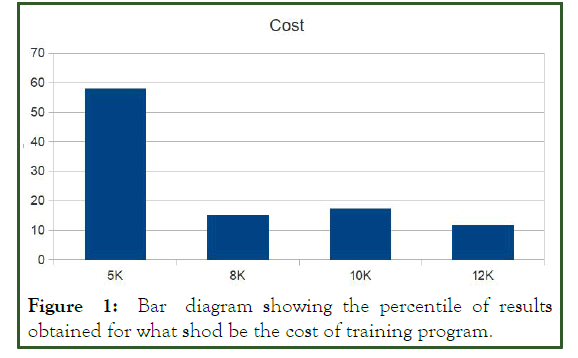
Figure 1: Bar diagram showing the percentile of results obtained for what shod be the cost of training program.
The second was framed based on how many number of days should the training be conducted and the options were 3 days; 4 days; 5 days. According to Figure 2 out of which 49.02% of participants preferred the training to be 3 days. 29.06% of participants preferred 4 days for the training session and 23.25% of participants choose 5 days [10].
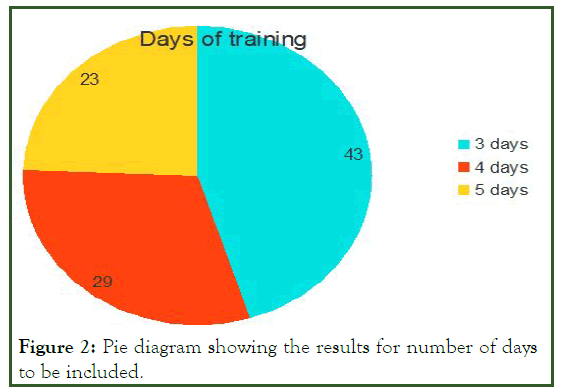
Figure 2: Pie diagram showing the results for number of days to be included.
The third question included whether to include weekdays or should the training be conducted only on weekends. 36.04% of participants were willing to include weekends for training. 60.46% participants wanted the training to be conducted only on weekdays as shown in Figure 3.
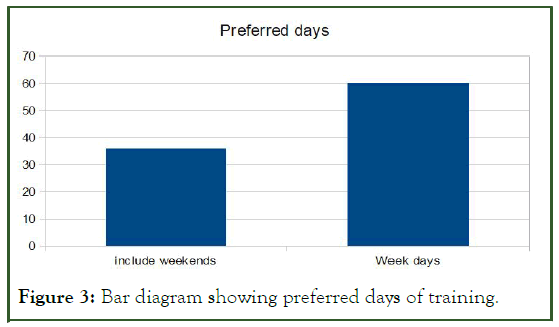
Figure 3: Bar diagram showing preferred days of training.
The next question included was regarding the preferred method of training as shown in Figure 4, options included were offline or online. Many of the participants choose online mode of training.
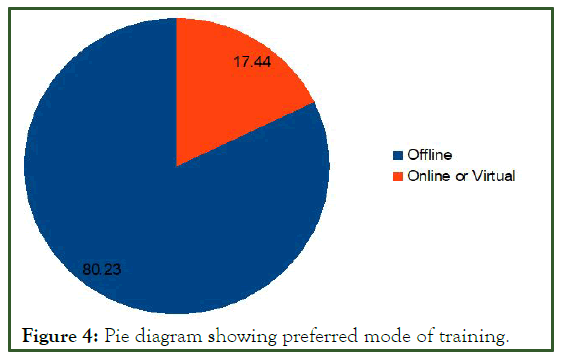
Figure 4: Pie diagram showing preferred mode of training.
The fourth criteria included were which method should be followed for teaching during training as shown in Figure 5. Options included were chalk and board, google classroom, moodle and power presentation. 9.302% of participants preferred the traditional way of teaching (chalk and board), 3.48% of participants choose google classroom, 20.9% of participants choose MOODLE (Modular Object-Oriented Dynamic Learning Environment). 60.46% participants choose power point presentation.
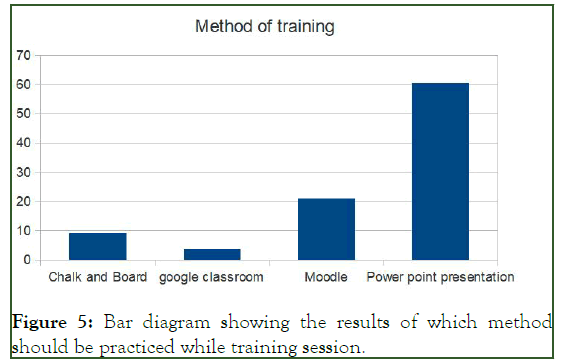
Figure 5: Bar diagram showing the results of which method should be practiced while training session.
The next question followed was by how frequently the training should be conducted as shown in Figure 6. Options included were once a year once in two years quarterly and twice a year. 40.6% of the participants choose once years 17.4% of the participants choose once in two years 13.95% of the participants choose quarterly and 23.25% of the participants choose twice a year.
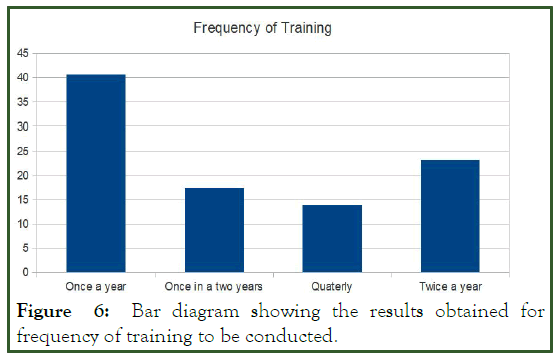
Figure 6: Bar diagram showing the results obtained for frequency of training to be conducted.
We have included the next question to be regarding the material of reference after the training we had two given them two options whether hard copy or soft copy.45.34% of participants choose hard copy for reference and 51.16 % of participants preferred soft copy over hard copy as shown in Figure 7.
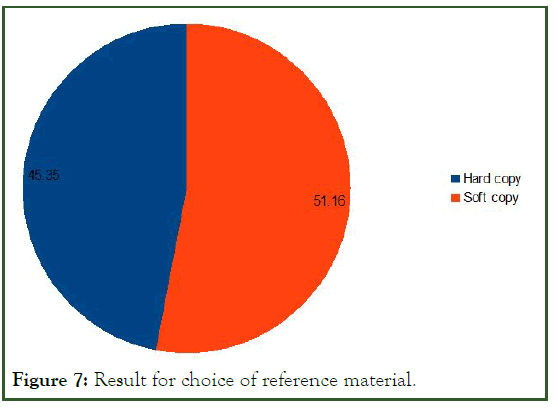
Figure 7: Result for choice of reference material.
We asked whether or not mock audit should be conducted or not. It is the single question where there was 100% acquiescence as yes.
The next criteria we included was how would it be better for allocation of participants for better understanding the options were different departments (only medical faculty), different departments along with para medical staff, same department (only medical faculty), same department along with paramedical faculty. The responses received were as followed different department (only medical faculty) 27.9%, different department along with paramedical staff 46.511, same department (only medical faculty 11.6%, same department along with paramedical staff 8.139 as shown in Figure 8.
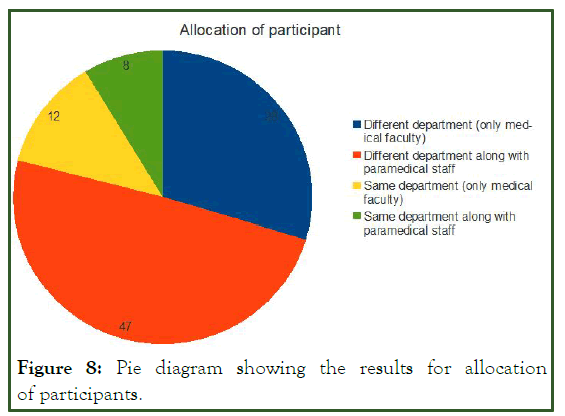
Figure 8: Pie diagram showing the results for allocation of participants.
Conclusion
The study throws a light on improving the ISO 15189:2012 training process and outcome. It has been found that 3 days training in week days with costing around 5000 rupees once a year with combination of medical faculties from different department along with paramedical staff are more preferable. Offline mode with power point teaching method is more convenient and training material in soft copy is preferred over hard copy. Mock audit should be conducted to make training program more effective.
References
- Tailor P. Evaluation of performance of trainee at 4 days MOODLE based internal auditor training as per ISO 15189:2012 and NABL-112. Int J Med Biomed Stud. 2019;3(11):236-239.
- Burnett D. ISO 15189: 2003-quality management, evaluation and continual improvement. Clin Chem Lab Med. 2006;44(6):733-739.
[Crossref] [Google Scholar] [PubMed]
- Tsheola EM, Kruger W. Internal audit: Non-conformance at non-accredited public health laboratories in Gauteng, South Africa: Views of internal auditors for 2015-2019. J Med Lab Sci Techno South Afr. 2022;4(2):64-69.
- Yao K, Luman ET, Nkengasong JN, Maruta T. The SLMTA programme: Transforming the laboratory landscape in developing countries. Afr J Lab Med. 2016;5(2):1-8.
[Crossref] [Google Scholar] [PubMed]
- Berwouts S, Morris MA, Dequeker E. Approaches to quality management and accreditation in a genetic testing laboratory. Eur J Hum Genet. 2010;18(1):S1-S19.
[Crossref] [Google Scholar] [PubMed]
- Guzel O, Guner EI. ISO 15189 accreditation: Requirements for quality and competence of medical laboratories, experience of a laboratory I. Clin Biochem. 2009;42(4-5):274-278.
[Crossref] [Google Scholar] [PubMed]
- Ong SK, Donovan GT, Ndefru N, Song S, Leang C, Sek S, et al. Strengthening the clinical laboratory workforce in Cambodia: A case study of a mixed-method in-service training program to improve laboratory quality management system oversight. Hum Resour Health. 2020;18(1):84.
[Crossref] [Google Scholar] [PubMed]
- Allen LC. Role of a quality management system in improving patient safety-laboratory aspects. Clin Biochem. 2013;46(13-14):1187-1193.
[Crossref] [Google Scholar] [PubMed]
- Kanagasabapathy AS, Rao P. Laboratory accreditation-procedural guidelines. Indian J Clin Biochem. 2005;20(2):186.
[Crossref] [Google Scholar] [PubMed]
- Ravaghi H, Abolhassani N. Comparison of laboratories directors’ and assessors’ opinions on challenges and solutions of standardization in Iran: A qualitative study. Glob J Health Sci. 2015;7(4):358.
[Crossref] [Google Scholar] [PubMed]
Citation: Jethva D, Pappula S, Patel S (2023) ISO 15189 Internal Auditor Training-Feedback from Participant to Make it More Effective and Convenient. Int J Account Res. 11:331.
Copyright: © 2023 Jethva D, et al. This is an open access article distributed under the terms of the Creative Commons Attribution License, which permits unrestricted use, distribution, and reproduction in any medium, provided the original author and source are credited.


